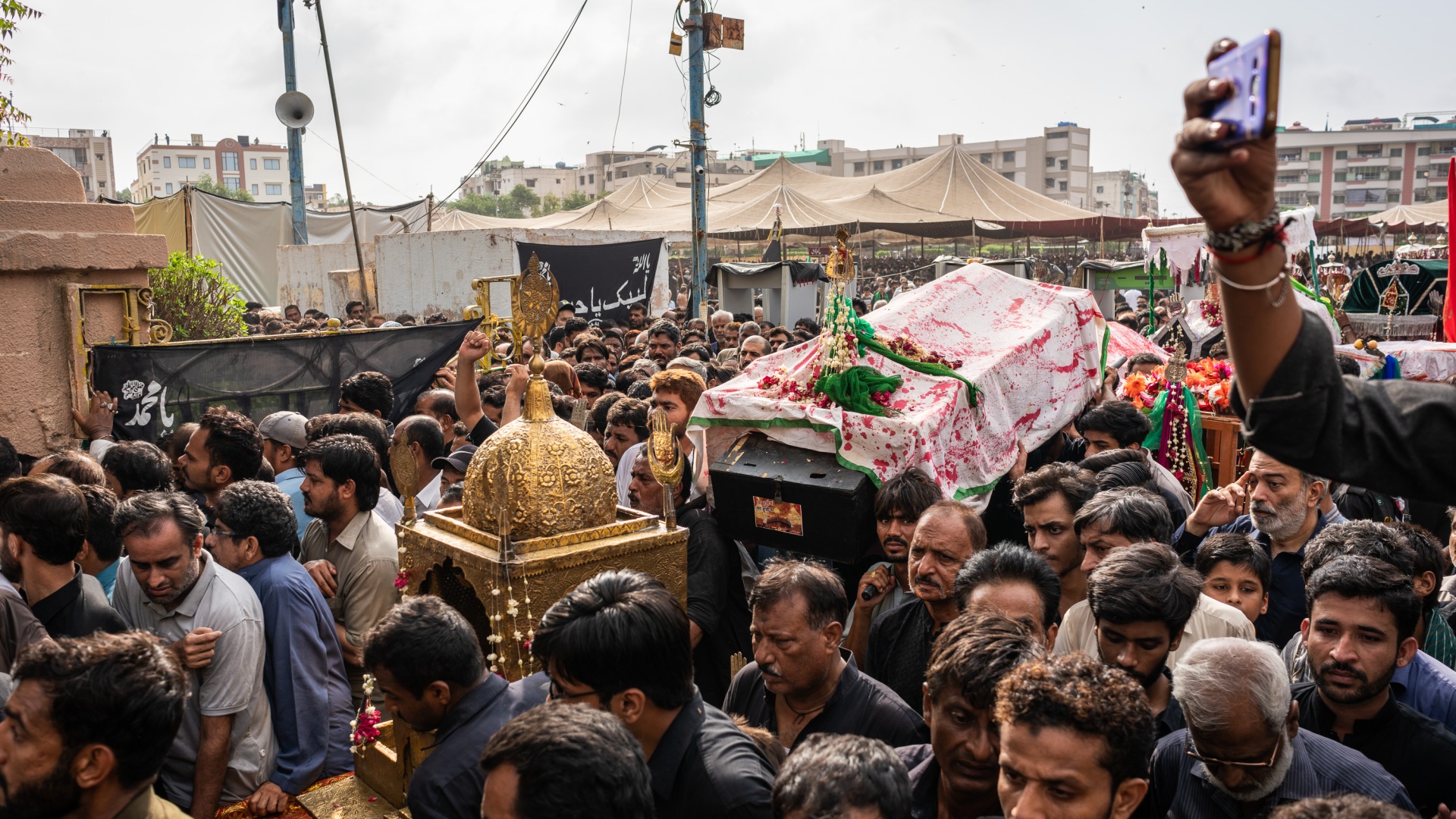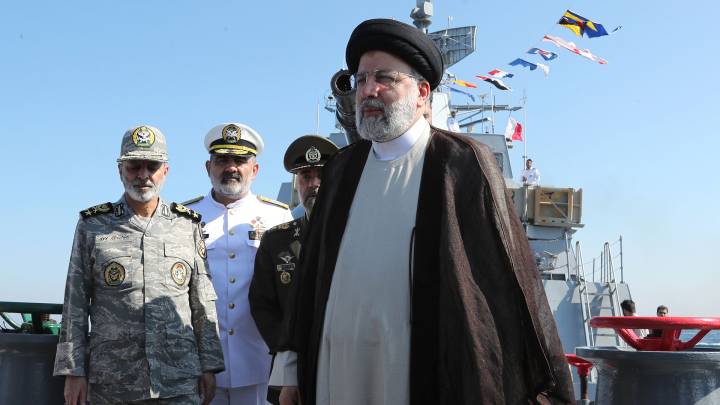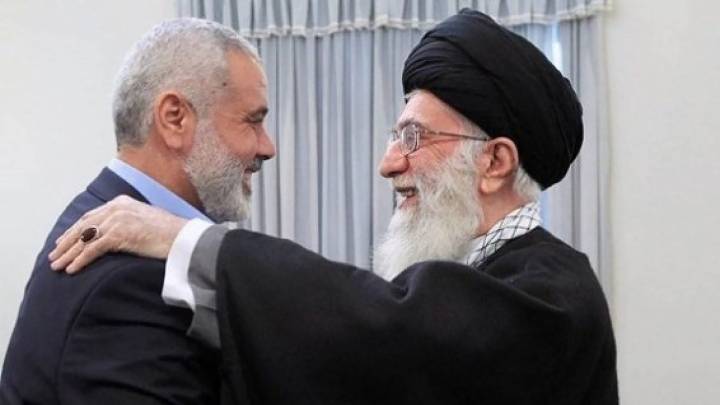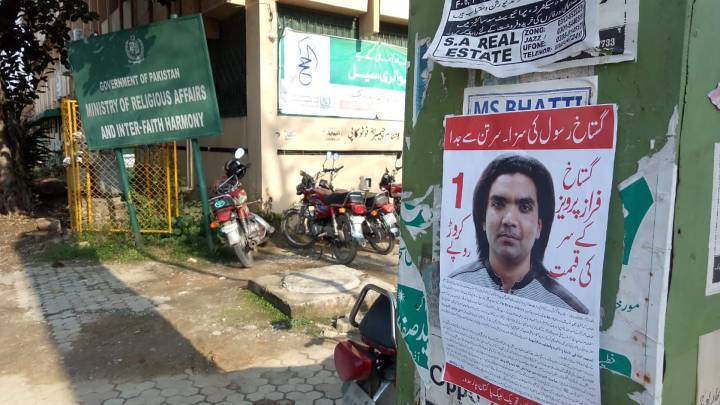An Iranian-Saudi war along sectarian lines could spell doom for Pakistan and could put its Shia minority into a stranglehold. The first priority for foreign policy should be to mitigate this, and quickly.
Pakistan plays a pivotal role in the Iranian-Saudi confrontation. Just probably not for the reasons that the bulk of the media coverage suggests.
Over the past few months, I have regularly heard experts talking about the involvement of Pakistani Shia militias in Syria. Foreign Shia militias fighting on the side of the Iranian Revolutionary Guard Corps (IRGC) in Syria and beyond are somewhat of a trending topic of late among those who cover the Middle East today.
This attention is not unwarranted given how influential these militias have been in the war in Syria. They have provided the IRGC with much-need firepower and have helped to prop up the Assad regime. In this context, however, analysts often fail to distinguish between the Lebanese Hezbollah and the Shia militias made up of Afghan and Pakistani fighters.
While they share many similarities, there is one significant and oft-overlooked difference between the Afghan Liwa Fatemiyoun and the Pakistani Liwa Zainebiyoun brigades: their size. While estimates of the size of both brigades are notoriously unreliable, the Fatemiyoun brigade is widely believed to have comprised between 8,000 to 20,000 fighters at its peak. Even the most generous estimates for the less-studied Liwa Zainebiyoun do not exceed a total of 2,500 combatants. Some, usually well-informed analysts put the number of fighters in the Liwa Zainebiyoun as low as 800.
According to Ali Alfoneh, an analyst at the Washington Institute and an avid observer of Shia armed movements, only 160 Pakistani nationals have died fighting for Shia militias in Syria between January 2012 and mid-July 2019, compared with 917 Afghan nationals, 1,246 Lebanese and 568 Iranians who died in the same period. This finding indicates that the widespread notion of a large-scale Shia-Pakistani involvement in Syria is at best highly exaggerated.
When examining the raw numbers, one could easily fall for the belief that Pakistani involvement serves only as a side note to the essentially Saudi-Iranian proxy war masquerading as a Shia-Sunni confrontation across the Middle East. However, such a conclusion could not be further from the truth.
Not only would this overlook the larger numbers of Sunni Takfiri mercenaries of Pakistani descent fighting in Afghanistan, Syria, Iraq, and Yemen. It would, more importantly, neglect the potentially dreadful consequences of a globally increasing sectarian rift in Pakistan and Kashmir itself.
An assertive and beleaguered minority
According to the 2017 census, Pakistan has a current population of roughly 213 million people, including the Pakistani-administered parts of Kashmir (around 5 million), totalling half of the population of the entire Arab League. The numbers of Shia Muslims in South Asia were last included in the 1921 All India Census during the British Raj. However, academic estimates on the current Shia population of Pakistan usually range between 10-20 percent, which would mean that the country is home to the world’s second-largest Shia population. Shia currents form an indigenous majority in the northernmost region of Gilgit-Baltistan, which both Ismaili and Twelver Shia communities call their home, as well as in smaller enclaves of rural Punjab and Sindh. The provinces of Balochistan and Khyber-Pakhtunkhwa are home to a much smaller Shia segment with the prominent exception of Parachinar. The city is located in the former Kurram Agency right on the border to Afghanistan, which is populated by Twelver Shia Pashtuns of the Turi tribe, and the Afghan Hazara community of Quetta.
Additionally, large Shia communities exist in the urban centres of Pakistan, many of them Muhajir who migrated from Uttar Pradesh and the Deccan Plateau after the partition in 1947. A large share of these Shia Muhajir are descendants of long-established land-owning Sayyed families, thus playing a vital role in the establishment of Pakistan. Some of the Pakistani founding fathers such as the first president of Pakistan, Iskander Mirza, and even the Quaid-e-Azam Muhammad Ali Jinnah himself (who was born into a Gujarati Ismaili family and later converted to Twelver Shia Islam) hailed from this tier of influential Shia merchants and landed aristocrats.
The Shia community of Pakistan is still deeply shaped by the coexistence of both poor and rather disenfranchised Shias, most prominently the Turis of Parachinar, and a well-established and highly influential Shia aristocracy that can be found in the upper strata of the essentially (neo-)feudal society so characteristic of today’s Pakistan. In his book “The Shia of Pakistan”, Andreas Rieck has aptly portrayed the Shia as an assertive and yet beleaguered minority. Despite the community’s absolute size and relative power, Shia communalism has still not evolved to play a dominant political role in Pakistan. In view of a dominant and, at times, aggressive Sunni majority, Shia of all strata have traditionally opted to downplay their sectarian identity.
A hotbed of sectarian violence
While sectarian violence has erupted periodically since at least the Mughal era, several factors have led to a steep increase of communal tensions and anti-Shia sentiment from the 1980s onwards. The three most notable factors were the backdrop of the Soviet invasion in Afghanistan, a close rapprochement with Saudi Arabia, as well as the so-called Islamisation policies under General Muhammad Zia-ul-Haq (1977-88).
Especially between 2009 and 2014, several hundred Shia were slaughtered in an unprecedented number of targeted attacks across the country. The economically disadvantaged Shia communities of Parachinar, Quetta, and to a lesser extent Gilgit-Baltistan, were specifically at risk and remain so until today. Additionally, there were also several cases of prominent urban Shias being targeted. However, in recent years, the casualties of sectarian violence have steeply decreased.
Nevertheless, it is not just the size of the Shia community, and the recent history of horrendous sectarian violence making the issue so perilous for Pakistan. The sectarian rift has also an important geopolitical component. Pakistan is a direct neighbour of Iran. Given the historically somewhat cold relationship with Tehran, and the special bond to Riyadh (some analysts believe that Pakistan may have a security agreement with Saudi Arabia that potentially includes nuclear protection in case of a foreign attack), one might understand why the Saudi-Iranian confrontation has been causing sleepless nights in Islamabad over the last five years.
Despite close personal relationships and its strong economic dependency on the Gulf countries – both directly, through significant financial aid and indirectly, through considerable remittances by millions of Pakistani migrant workers in the region – Islamabad has so far managed to retain a fair amount of leeway vis-à-vis both sides.
Newfound leeway vis-à-vis the Gulf
For instance, back in spring 2015, Pakistan did not support the Saudi-led operation “Decisive Storm” against the Iranian-backed Houthis in Yemen. The perplexed Saudis, who had already listed Pakistan among those providing military support, were reportedly caught off-guard. Similarly, the Pakistanis refrained from openly taking sides during the height of the Qatar crisis in 2017. Given the close military and financial ties and the fact that the then Pakistani prime minister, Nawaz Sharif, spent several years in exile in Saudi Arabia, Riyadh had assumed with confidence that Pakistani support would be a no-brainer. Just in 2014, when the Pakistani Rupee was experiencing serious turbulences, it was the Saudis who bailed Islamabad out with a loan worth $1.5 billion. However, the Saudis had severely miscalculated the bargain.
There are three main strategic reasons why Islamabad has opted to stay out of the Yemen war and the Qatar crisis. One is the close friendship between Pakistan and China. The so-called all-weather friendship between Islamabad and Beijing is arguably the second most important pillar in Pakistani foreign policy, after the rivalry with India.
In April 2015, at the onset of the Saudi-led operation “Decisive Storm” in Yemen, China was about to announce a set of wide-ranging infrastructure investments in Pakistan. Consequently, Beijing considered the threat of renewed instability in Pakistan as a risk to its considerable investments there. Hence, Beijing pressured Pakistan to remain out of regional conflict. And Chinese lobbying paid off. Chinese interests have been a strong factor and continue to be.
Another factor is the critical importance for Pakistan’s security apparatus to avoid a war on two fronts and a perceived encirclement by India and its allies. Justified or not, this intrinsic security interest has been the driving force behind Pakistan’s long-standing policy of supporting armed groups in Afghanistan. Those considered as “our men” by Islamabad include mujahideen such as the Hezb-e-Islami of Gulbuddin Hekmatyar.
The third reason was out of fear that sectarian violence would spill over into Pakistan. In a much-noted statement, Khawaja Asif, Pakistani Minister of Defence when operation “Decisive Storm” was launched, stated that “we will not take part in any conflict that could result in differences in the Muslim world, causing fault lines present in Pakistan to be disturbed, the aggravation of which will have to be borne by Pakistan.”
Mutual mistrust towards Iran
Given the existence of security threats in the porous border region of Balochistan, which is divided between Iran and Pakistan, Islamabad has good reason to avoid an open confrontation with Tehran. Its cautious approach is also informed by the experience of constant micro-aggressions on either side of the border.
Iran claims that Islamabad is not taking firm enough action against Jaish Al-Adl. This Sunni jihadi group is believed to be responsible for several attacks in the Iranian province of Sistan and Baluchestan on the border to Pakistan. Jaish Al-Adl has claimed responsibility for a suicide bombing killing 27 IRGC forces, in February 2019.
Pakistan, on the other hand, accuses Iran of tacitly supporting secular Baloch separatists such as the Balochistan Liberation Army (BLA) in the Pakistani province of Balochistan. Such groups have attacked Chinese and Pakistani targets with increasing vigour. China operates the port of Gwadar in the south of the province. Recent reports suggest that an offshoot of the BLA has merged with other nationalist Baloch insurgents to form a new super-group of Baloch separatists called Baloch Raaji Aajoi Sangar (or Baloch National Freedom Front, BRAS). This foreshadows a further deterioration of security in the province.
In light of this, it comes as no surprise that Pakistani authorities were reportedly more than alarmed by the threat of returning Shia militias from the Middle East as early as August 2014. This was when the National Counter Terrorism Authority issued a confidential warning against Iranian (and Iraqi) attempts to instigate Shia communities inside Pakistan along sectarian lines.
The ghost of sectarian tension
In private conversations, individuals close to the matter have repeatedly argued that the issue has been contained by the Inter-Service-Intelligence (ISI), the Pakistani secret service. They also say that the Pakistani security apparatus has not allowed Zainebiyoun combatants back into the country, by claiming that the fighters were actually Iranian nationals.
In fact, it seems likely that a large share of Zainebiyoun fighters has been recruited among Pakistani workers based in Iran. However, the reported arrests of several allegedly returned Zainebiyoun combatants in Pakistan have cast doubts on these assumptions. According to Pakistani analysts, at least some Zainebiyoun fighters were, in fact, recruited in Parachinar and other parts of Pakistan.
Sectarian violence has been on the rise this year in Karachi, Pakistan’s largest city. After years of relative calm, multiple incidents have rocked the port city in the first half of 2019:
• On 18 January, two seminary teachers belonging to the Ahle Sunnat wal Jamaat (ASWJ), a Sunni group, were injured in a targeted attack.
• On 22 January, the Shia Ulema Council’s vice-president Muhammad Ali Shah was killed.
• On 4 February, a member of the ASWJ, was assassinated.
• On 22 March, prominent Sunni cleric Mufti Taqi Usmani, survived a targeted attack.
• On 15 April, members of the Shia community staged a 13-day-long sit-in, demanding the release of missing individuals from the Shia community gone missing. Under dubious circumstances, many of them reappeared home afterwards.
According to the news outlet Samaa, five people were arrested by the authorities for “anti-state activities” in Karachi. They were accused of belonging to a non-local recruiting network for the Zainebiyoun. While local authorities refrained from naming the country they were referring to, all evidence points to Iran.
Renewed rapprochement with Riyadh
The Imran Khan administration, that came to power in 2018, has in part tried to restore its special relationship with Riyadh. This year alone, Saudi Crown Prince Muhammad bin Salman has been promising investments worth $20 billion. In turn, Pakistan is providing a significant number of military personnel to Saudi Arabia for training and advisory purposes. The troops are being deployed only inside of the borders of the kingdom. It is not the first time that the Pakistani army has been deployed abroad. Saudi Arabia has been militarily reliant on the muscle of the Pakistani army since at least the late Cold War. Several thousand Pakistani soldiers are currently stationed all over the Arab side of the Gulf.
During a recent state visit earlier this year, Imran Khan reportedly broke protocol to drop off Muhammad bin Salman at his residence personally. The de-facto Saudi leader proclaimed that he shall be “consider(ed) Pakistan’s ambassador to Saudi Arabia.”
Following the drone strikes on Aramco oil processing facilities in Abqaiq-Khurais, Khan visited Riyadh and expressed solidarity with Saudi Arabia. He condemned the attack while refraining from openly blaming Iran.
Spill overs in Kashmir
Repercussions of the Saudi-Iranian confrontation can also be felt in Kashmir. Despite the recent up in relations between the Gulf and Pakistan, Saudi-Arabia and the United Arab Emirates have mostly stayed silent on the Indian decision to strip Indian-administered Kashmir of its autonomy in August. Thus, causing distress in Islamabad. Apart from the expanding economic clout of India in the Gulf, this decision might have been informed by the Pakistani stance during the Yemen and Qatar crises.
Iran has been more straightforward in its approach, surprisingly condemning Indian actions quite vocally. However, by focusing exclusively on the Shia community in Kashmir, Tehran has added considerable headache to Pakistan. Islamabad is traditionally positioning itself as the sole protector of Muslims in South Asia. Indian-controlled Kashmir hosts a sizeable Shia community accounting for up to a quarter of the Muslim population. Additionally, the Israeli daily Haaretz reports, that Kashmir has been identified as a main recruiting ground for the Zainebiyoun by the IRGC. According to the report, several Zainebiyoun veterans have returned from the Middle East to Indian-administered Kashmir already.
In conclusion, there is plenty of evidence to suggest that the spill over effects of the Iranian-Saudi confrontation can already be seen in Pakistan. With its sizeable Shia community and history of sectarian violence, a further escalation could leave Pakistan in a more vulnerable position than other countries in the region.
Islamabad has identified such risks from at least 2014 onwards and has so far managed to circumnavigate some of them fairly well. Therefore, not all is lost, yet. But mitigating the potentially dreadful consequences of an increasing Sunni-Shia rift on the global stage for Pakistan by strengthening its new-found leeway between the Saudi and Iranian blocs needs to be assertively prioritised.




